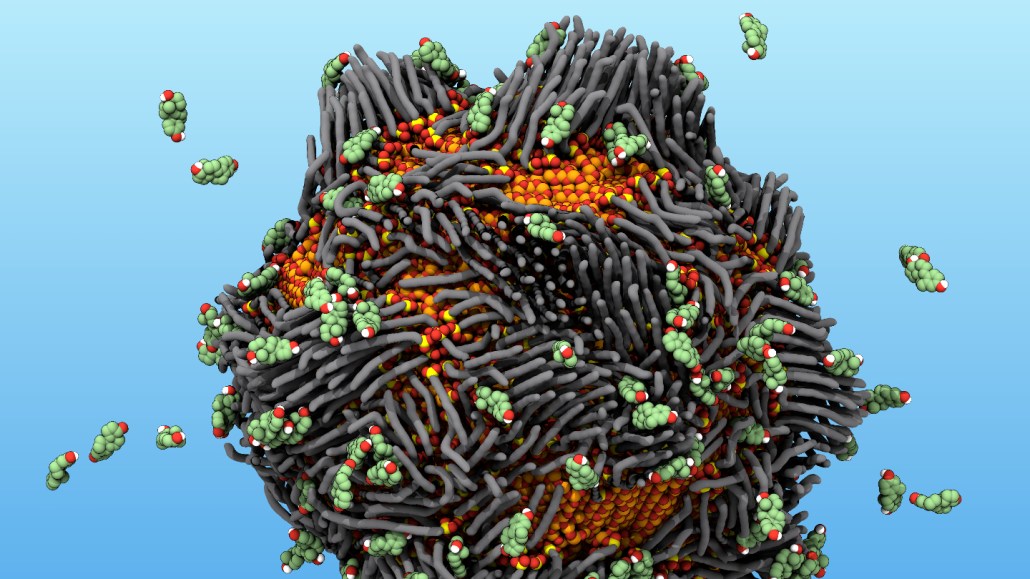Magnetic ‘rusty’ nanoparticles pull estrogen out of water
Iron oxide particles trap estrogen hormones, possibly limiting harm to aquatic life

Iron oxide nanoparticles (one illustrated, orange) coated with phosphonic acid molecules (gray) can capture estrogen hormones (green) from water samples.
Dustin Vivod and Dirk Zahn/Computer Chemistry Center/Friedrich-Alexander-Universität Erlangen-Nürnberg






